I dedicate this effort to those who came, visited, wrote or not a comment, leaving with some curiosity or the usual indifference towards nature dominating our culture, the wild world.
If interested, plant/seed exchanges will be considered, be serious, provide your list of plants, botanical names preferred.
INVENTORY FOR 2008
Allium, Aji, Albaca, Agavaceas (3), Alocasia cucculata, Aglaomena, Antigonum leptopus,
Allamanda, Arashis hypogea, Amarylis, Bauhinia, Brumfelsia pauciflora, Burleria repens,
Bouganvillea, Chinese violet, Cajanus cajan, Croton (3), Chicharo, Clitoria terratea, Costus
graptophylum, Cuphea hissofilia, Carica papaya, Coccoloba uvifera, Clorophytum comosum,
Crinum, Chinas, Cestrum diurnum, Calliandra aemathocephala, Cathartus roseus.
NOT finished, half way... Dracena, Diffenbachia, Daylily, Eucare, Gardenia (2), Guayacan,
Helechos (2), Hibiscus (3), Ipomoea (3), Ixora (2), Jasminun multiflorum, Insulina, Limon,
Lipia micromera, Mirabilis siciliana, Mango, Momordica Charantia, Ochna mossabicensis,
Pandanus, Oxalis, Plumeria, Pedilanthus euphorbiaceae, Pereskia corrugata, Pithecellobium
dulce, Proiphys amboinensis, Pseuderantemun reticulatum, Pleomeles (2), Pereskia bleo,
Romero, Rhipsalis, Ruelia brittoniana, Sanseveria(3), Turnera (2), Scadoxus, Syngonium,
Sanguinaria, Tradescantia (4), Tulbaghia violacea, Thevetia peruviana, Tumbergia, Tecoma
stans, Yuca, Zamia and Zephyrantes grandiflora.
THOSE numbers in parenthesis are varieties. No, is not strict alphabetical order and yes, the
possibility of spelling mistakes is present. However, when going to search or your favorite
way to do it, the right spelling will be suggested.
Final words. I want to thank everyone who dropped by. Those with suggestions, criticism,
questions and support. Any other not falling in any of the above, thanks also. Planting, writing about these matters are great to keep mental sanity. A serious tool not to be wasted around ego trips or the I, the world spinning around the self. To all people in the blogosphere good luck
in future projects for 2009.
Be consistent with your stance. The environment should not
be a pet/security blanket with writing block attacks. Or filling to be used any time the tree hunting(any second) season in Puerto Rico, to make pretend. Plant something today or tomorrow. Tell us what you have in your yard, put some pictures. Credibility rules!
Thanks. See you lator alligators.
Allamanda, Arashis hypogea, Amarylis, Bauhinia, Brumfelsia pauciflora, Burleria repens,
Bouganvillea, Chinese violet, Cajanus cajan, Croton (3), Chicharo, Clitoria terratea, Costus
graptophylum, Cuphea hissofilia, Carica papaya, Coccoloba uvifera, Clorophytum comosum,
Crinum, Chinas, Cestrum diurnum, Calliandra aemathocephala, Cathartus roseus.
NOT finished, half way... Dracena, Diffenbachia, Daylily, Eucare, Gardenia (2), Guayacan,
Helechos (2), Hibiscus (3), Ipomoea (3), Ixora (2), Jasminun multiflorum, Insulina, Limon,
Lipia micromera, Mirabilis siciliana, Mango, Momordica Charantia, Ochna mossabicensis,
Pandanus, Oxalis, Plumeria, Pedilanthus euphorbiaceae, Pereskia corrugata, Pithecellobium
dulce, Proiphys amboinensis, Pseuderantemun reticulatum, Pleomeles (2), Pereskia bleo,
Romero, Rhipsalis, Ruelia brittoniana, Sanseveria(3), Turnera (2), Scadoxus, Syngonium,
Sanguinaria, Tradescantia (4), Tulbaghia violacea, Thevetia peruviana, Tumbergia, Tecoma
stans, Yuca, Zamia and Zephyrantes grandiflora.
THOSE numbers in parenthesis are varieties. No, is not strict alphabetical order and yes, the
possibility of spelling mistakes is present. However, when going to search or your favorite
way to do it, the right spelling will be suggested.
Final words. I want to thank everyone who dropped by. Those with suggestions, criticism,
questions and support. Any other not falling in any of the above, thanks also. Planting, writing about these matters are great to keep mental sanity. A serious tool not to be wasted around ego trips or the I, the world spinning around the self. To all people in the blogosphere good luck
in future projects for 2009.
Be consistent with your stance. The environment should not
be a pet/security blanket with writing block attacks. Or filling to be used any time the tree hunting(any second) season in Puerto Rico, to make pretend. Plant something today or tomorrow. Tell us what you have in your yard, put some pictures. Credibility rules!
Thanks. See you lator alligators.


















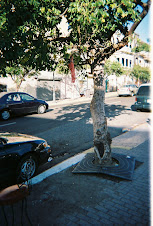-25.jpg)
-24.jpg)
























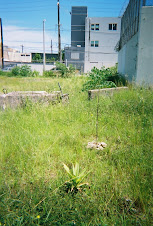




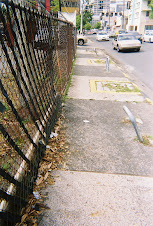
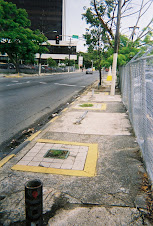
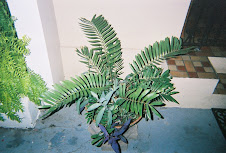




-22.jpg)
-25.jpg)
-24.jpg)






-16.jpg)
-13.jpg)
-08.jpg)
















































